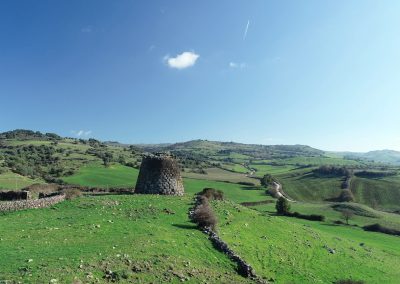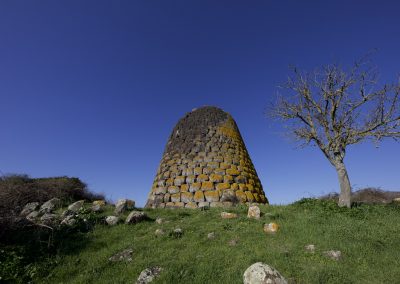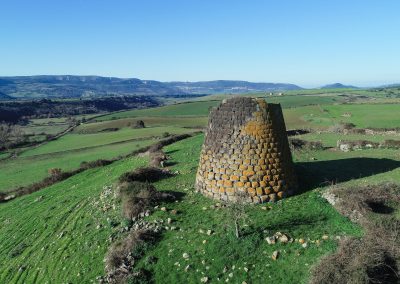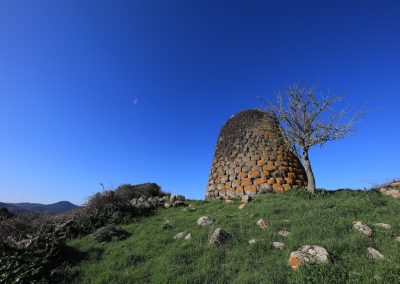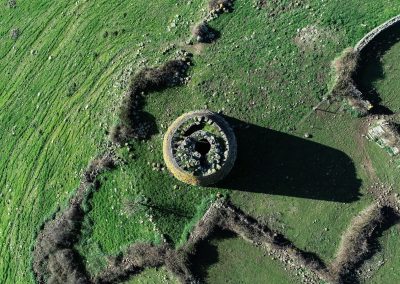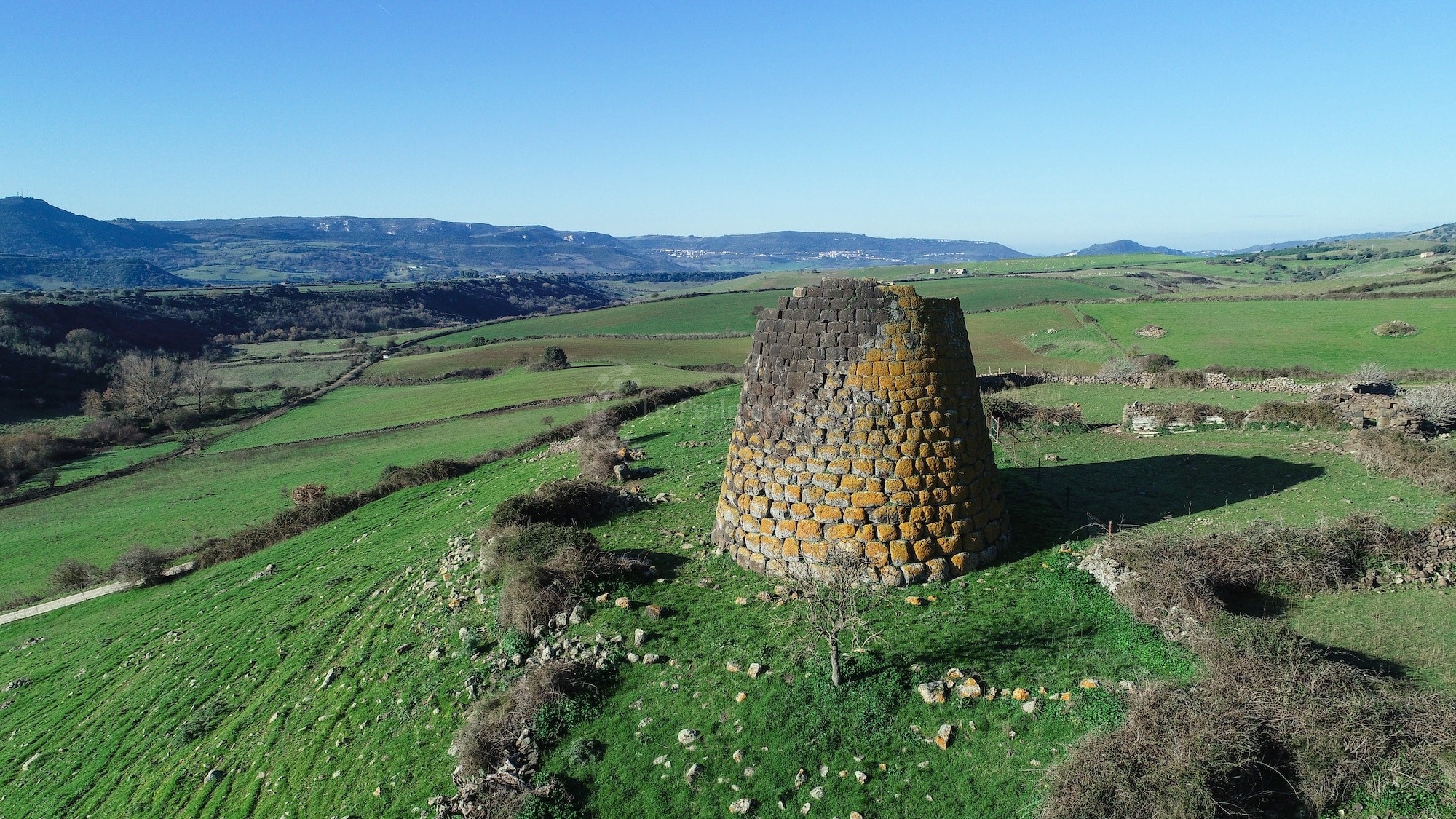
Codrongianos
Nuraghe Nieddu
The Nieddu nuraghe (tn* large megalithic, tower-shaped, prehistoric stone structures found in Sardinia, dating from the second millennium BC to the Roman conquest) is located on top of a small hill between Saccargia and the valley of Bunnari. You can easily get there by following a dirt road east of the San Martino water source. The monument has a truncated cone shape with a nuragic tower made in basalt (volcanic stone), with a ground floor and a first floor, over which there once must have been a second floor, as the remainder of a staircase shows us. On the south-east side of the nuraghe, where the entrance is, 17 layers of lined up rock to a total height of 11-12 metres remain. For the most part, the entrance is covered by earth with a lintel and a discharge window above it. The entrance takes you to a long corridor that provides access on the left to a helicoidal staircase leading to the upper room The end of the corridor opens into a room up with an intact fake dome covering called tholos, with two niches, one in front of the entrance and the other on the left, that becomes wider in the wall, with a bell shaped space of about 2×2 metres. On the left of the second niche, raised above the ground, there is a third small niche that must have been a suspended doorway, connecting to the staircase from the cobbled floor. The staircase that leads to the second floor indicates that the tower must have been articulated into several floors, with a terrace on the top. Without any archaeological digs we are uncertain about its age, but by observing the characteristics of the structure, we can suppose that it was not built before the late phases of the Middle Bronze age or the beginning of the Late Bronze Age. The monument was noticed and visited in 1821 by De La Marmora who drew its perspective and plan of the two floors, then again in 1874 by Spano and in 1901 by Pinza. (tn* historians of great value to Sardinian history).
Source: “Images of the past, Archaeological Sardinia of the late 1800s in the photographs of the English Dominican father Peter Paul Mackey”, Carlo Delfino Editore (in Italian)

